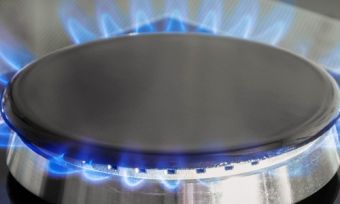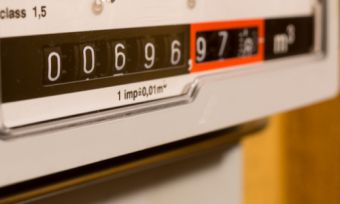Compare Gas Prices and Plans
Looking for a cheaper gas plan for your home? We compare gas prices from a range of suppliers to help you find the right match.

Start with your postcode
to compare 686+ Canstar Blue expert rated plans
-
12 month energy plan with no exit fees Glossary
-
No lock in contract with variable rates Glossary
-
Ongoing energy plan with no renewal required Glossary
-
No lock in contract with variable rates Glossary
-
Ongoing energy plan with no renewal required Glossary
-
No lock in contract with variable rates Glossary
-
Ongoing energy plan with no renewal required Glossary
-
No lock in contract with variable rates Glossary
-
Ongoing energy plan with no renewal required Glossary
-
No lock in contract with variable rates Glossary
-
12 month energy plan with no exit fees Glossary
-
No lock in contract with variable rates Glossary
-
Ongoing energy plan with no renewal required Glossary
-
No lock in contract with variable rates Glossary
-
12 month energy plan with no exit fees Glossary
-
No lock in contract with variable rates Glossary
-
12 month energy plan with no exit fees Glossary
-
No lock in contract with variable rates Glossary
-
Ongoing energy plan with no renewal required Glossary
-
No lock in contract with variable rates Glossary
Showing 10 of 36 results
Unsure of a term in the above table? View glossary
The initial results in the table above are sorted by Value Rank out of 10 (High-Low) , then Price/year (estimated) including conditional discount (Low-High) , then Brand Satisfaction (High-Low) . Additional filters may have been applied, which impact the results displayed in the table - filters can be applied or removed at any time.
Why compare gas prices and plans with Canstar Blue?
Easy to compare
Compare gas prices from some of the biggest providers across Australia to help you find the best value for money
100% free to use
Our gas plan comparison service is completely free to use. Plus, we’ll never ask for your phone number
Switch with confidence
We include a ‘value score’ that ranks gas plans based on other value-add features in addition to price. Learn more
Sally Tindall’s guide to comparing gas plans
Gas tips from our expert
- Understand your gas rates: When you’re comparing gas plans, make sure you look at both the unit price of the gas, but also what’s known as the ‘supply charge’, which is the daily cost of being connected to the gas network.
- Be wary of hidden fees: Check for any hidden charges (e.g. exit fees) that might be buried in the fine print such as exit fees.
- Know your bill cycles: While price is important, don’t forget the practical things like how often the provider bills you and whether the provider requires you to set up a direct debit.
- Actively compare your options: Gas prices can and do change and switching is relatively easy, so it pays to actively weigh your gas options. Once you make the switch, your new provider will do all the back-end paperwork and ensure the transition from your old provider doesn’t result in a break in supply.
- Consider different providers for electricity and gas: It’s also worth remembering that you don’t have to roll your electricity and gas in together. You can have different providers for each, so check to see if there’s value in splitting them up.
About our gas plan comparison service
Our gas plan comparison service helps you compare the latest gas offers in your area, simply by entering your postcode.
In addition to showing you the cheapest prices, our comparison includes a unique value score that shows you which gas plans offer the best overall value, rather than just the cheapest rates.
This score is based on a combination of price and feature data. Compare plans now and stop paying more than you need to.
How to compare gas plans
The process of comparing gas plans is quite similar to that of comparing electricity plans. The only real difference is in some of the terminology used.
Keeping this in mind, there are a few key areas to consider when comparing gas plans. These are:
- The usage rates: Represented as cents per megajoule (c/MJ), this refers to the cost you’ll pay for every unit of gas consumed at home.
- The supply rates: Represented as a charge per day, this refers to the cost you’ll pay for being connected to the gas mains.
- Conditional discounts: This refers to any discounts that may be applicable on the plan if a certain condition is met, e.g. paying on time.
- Contract length: This refers to how long your plan will be valid for. Benefit periods may also play into this if you have a discount or fixed rates.
- Fees and charges: This refers to any additional charges that may occur as a result of an action, such as late payment, credit card payment, opting for paper bills or connection and disconnection fees when moving homes.
It should also be noted that, just like your electricity contract, a 10-business-day ‘cooling off’ period applies to your gas contract.
This means you’re entitled to change your mind and end the contract without having to pay any fees, if you aren’t happy with the plan you’ve chosen or find a better deal elsewhere.
Find the best gas prices available
No one likes paying more than they need to on their gas bills. But how do you go about finding the best gas prices for your household?
Most times when you are comparing gas plans, you’ll be looking at the estimated monthly, quarterly or annual figure, but it could pay to look beyond this and investigate what your everyday usage and supply charges will be.
For example, if your household is only using a small amount of gas each month or quarter, then you may find it more worthwhile to look for gas plans with lower supply rates, as these would form the largest portion of your bill.
For a high-usage gas household, however, a plan with cheaper usage rates would probably pay off more than a lower supply charge.
These are the costs that ultimately decide what you’ll be forking out come your billing due date, so understanding these could reduce your chances of a nasty bill shock.
Compare the best-rated gas suppliers

Canstar Blue publishes annual customer satisfaction ratings for natural gas suppliers in Victoria, New South Wales, Western Australia, Queensland and South Australia, as well as dual fuel energy providers and LPG suppliers.
These are based on the feedback of bill-paying customers and rank providers based on factors such as value for money, customer service and overall satisfaction. We’ve listed our current 2024 and 2025 award winners below to help you on your comparison journey.
- Best-Rated Dual Fuel Provider (National): Lumo Energy
- Best-Rated Natural Gas Supplier in Victoria: Red Energy
- Best-Rated Natural Gas Supplier in NSW: Red Energy
- Best-Rated Natural Gas Supplier in WA: Origin
- Best-Rated Natural Gas Supplier in QLD: Origin
- Best-Rated Natural Gas Supplier in SA: Origin
- Best-Rated LPG Supplier (National): Supagas
- Most Trusted Natural Gas Supplier (National): Kleenheat
FAQs about gas
About our gas experts
 Tara Donnelly, Utilities Editor
Tara Donnelly, Utilities Editor
Tara Donnelly is Canstar Blue’s Utilities Editor, leading the team that focuses on energy, telecommunications and consumer technology, across news, reviews and how-tos. Tara has spent more than a decade covering these topics in Australia, the US and Canada, which means she’s written about countless product launches and industry changes, including the rise of 5G, Australia’s ongoing NBN rollout, the recent years of energy price volatility and the rise of renewable energy sources.
Tara also has long experience in writing within the comparison industry, giving her great insights into the information consumers want when determining which plan or device will best meet their needs, while time spent in the financial sector before turning her talent to content lets her crunch the numbers on price with ease. Tara leads the coverage of Canstar Blue’s ratings and awards for the internet and phone sectors and is an expert at advising consumers on how to use comparison tools to find the best power, internet or phone deal.
Her expertise has seen her appear in national media including 9 News, 7 News, Sunrise, the ABC, The New Daily and The Sydney Morning Herald.
Meet the Editorial Team Breanna Gream, Data Insights Team Lead
Breanna Gream, Data Insights Team Lead
Bachelor of Business (Finance) with Distinction & Bachelor of Mathematics (Applied Computational Modelling) with Distinction, QUT
Breanna Gream is Canstar’s Data Insights Team Lead, responsible for developing the methodology and delivering Canstar Blue’s Value Ranking and determining Outstanding Value award winners for the energy and telecommunications sectors. Breanna completed a double Bachelor’s degree in Business, majoring in Finance, and Mathematics, majoring in Applied Computational Modelling, at the Queensland University of Technology.
Breanna enjoys using her skills to help consumers find more suitable utilities plans by transforming complex calculations into a Value Rank that provides a simpler way to compare different products. She most recently developed Value Ranking methodologies for wireless broadband plans and solar energy plans, to make it easier for households to identify plans that provide good value not just in terms of prices but also the features they offer. Breanna’s work on Value Ranking plays a key part in determining the winners of Canstar Blue’s Outstanding Value awards for electricity, gas, solar, phone and internet brands.
Many of the articles published by Canstar Blue feature calculations also undertaken by Breanna and her team, which converts pricing data into easy-to-understand cost forecasts and average price information for readers.
During her time at Canstar Blue, Breanna has developed an in-depth knowledge of product, market and regulatory changes across the electricity, solar, gas, internet and phone sectors, and particularly likes keeping Canstar Blue’s methodologies up to date and reflective of the ever-changing utilities environment.
When Breanna’s not crunching data, she’s likely to be somewhere remote – two of her favourite things to do are hiking and mountain climbing.
Meet the Research TeamImportant information
For those that love the detail
This advice is general and has not taken into account your objectives, financial situation or needs. Consider whether this advice is right for you.

































